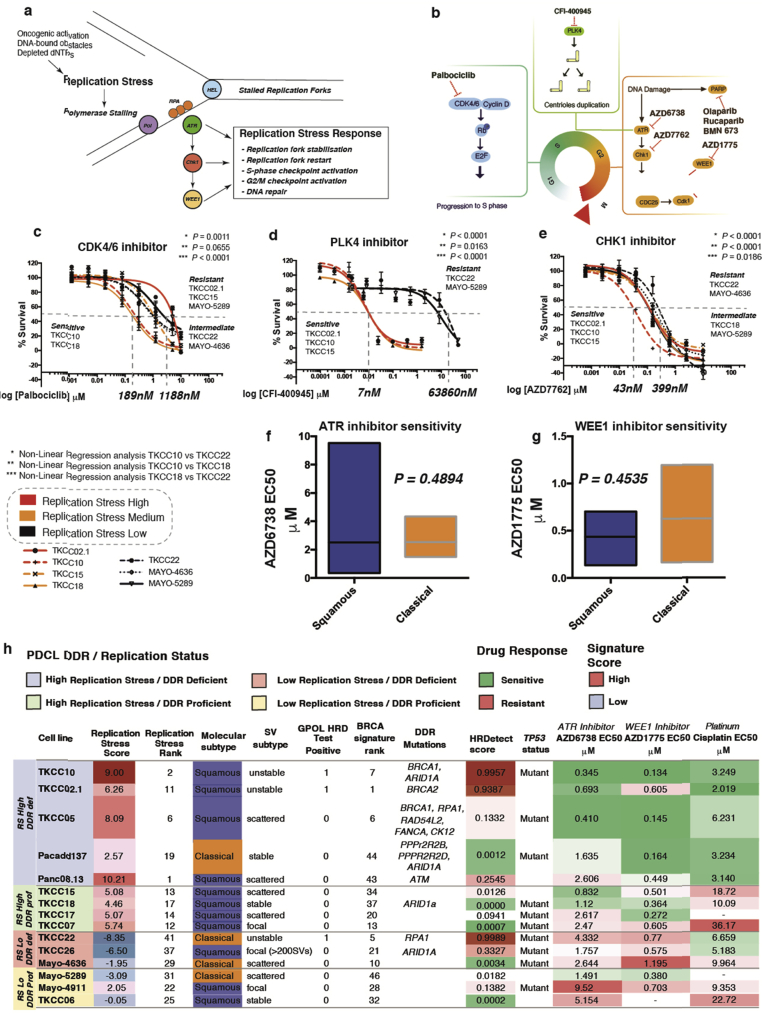Supplementary Figure 3.
Targeting replication stress in PC PDCLs. (A) Replication stress can be induced by multiple factors, including oncogenic activation (KRAS, MYC) and chemotherapeutics (eg, platinum). This results in stalled replication forks when DNA polymerases (Pol) are separated from DNA helicase (HEL). This results in the coating of single-strand DNA by replication protein A (RPA), which results in ATR activation. This, in turn, generates the replication stress response via CHK1 and WEE1, resulting in checkpoint activation and DNA repair. This safeguards the integrity of the genome by preventing entry into mitosis with incompletely replicated genomes. (B) Agents currently in clinical trials or approved for use in other cancer types that target cell cycle checkpoints. Cell viability curves for agents inhibiting (C) CDK4/6 (palbociclib), (D) PLK4 (CDI-400945), and (E) CHK1 (AZD7762). PDCLs were classified by replication stress signature score as high (red), medium (orange), and low (black). (F) Differences in sensitivity to ATR inhibitor (AZD6738) in squamous and classical cell lines. (G) Differences in sensitivity to WEE1 inhibitor (AZD1775) in squamous and classical cell lines. (H) Response to DNA damaging agents and agents targeting cell cycle checkpoint. Colored heatmap reflects replication stress signature score and relative HRDetect score (red indicates high; blue indicates low) and drug sensitivity (green indicates most sensitive; red indicates resistant). In general, PDCLs with high replication stress are more sensitive to ATR and WEE1 inhibition, irrespective of DDR status. In general, platinum sensitivity is dependent on DDR status, irrespective of replication stress signature score. dNTP, deoxynucleotide triphosphate.

